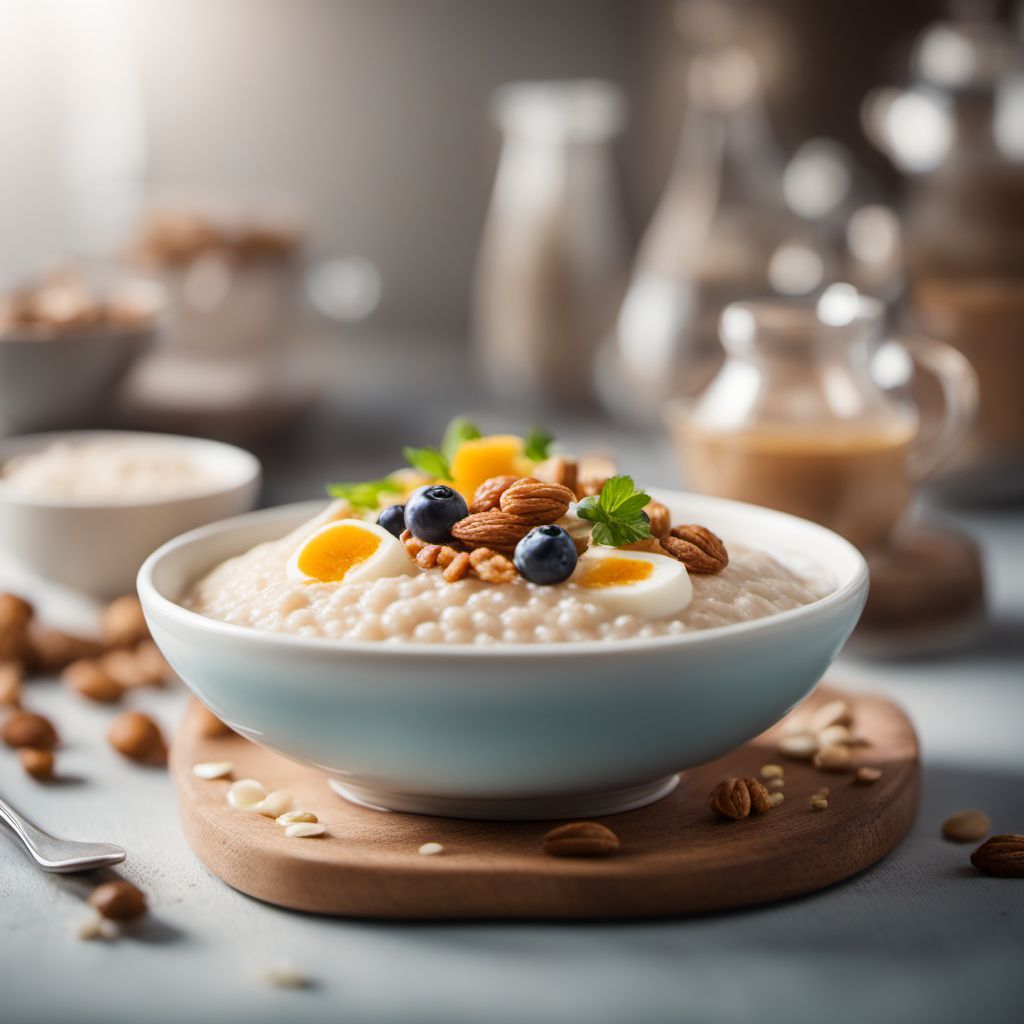
Ingredient
Porridge (ready to eat)
"Nourishing Comfort: Exploring the World of Ready-to-Eat Porridge"
Ready-to-eat porridge is a pre-cooked and packaged version of the traditional breakfast dish. It is typically made from a combination of grains, such as oats, rice, or quinoa, and is often flavored with fruits, nuts, or spices. The texture of ready-to-eat porridge is smooth and creamy, with a comforting consistency that warms the palate. Its appearance varies depending on the ingredients used, ranging from a creamy white to a rich golden color.
Origins and history
Porridge has been a staple food in many cultures for centuries. It has roots in ancient civilizations, including Egypt, Greece, and China, where it was consumed as a nutritious and filling meal. Throughout history, porridge has evolved and adapted to different regions and cultures, with each adding their own unique twist to the dish. Ready-to-eat porridge emerged as a convenient solution to meet the demands of modern lifestyles, providing a quick and easy way to enjoy this traditional comfort food.
Nutritional information
Ready-to-eat porridge is a nutritious option, packed with essential nutrients. It is a good source of fiber, providing a healthy dose of carbohydrates for sustained energy. Additionally, it contains vitamins and minerals, such as iron, magnesium, and B vitamins. The exact nutritional content may vary depending on the specific brand and ingredients used.
Allergens
Some ready-to-eat porridge products may contain allergens such as nuts, dairy, or gluten. It is important to carefully read the ingredient list and allergen information on the packaging to ensure it is suitable for individual dietary needs.
How to select
When selecting ready-to-eat porridge, look for products that use high-quality ingredients and minimal additives. Opt for options that are low in added sugars and sodium. Check the expiration date to ensure freshness and avoid any packages with signs of damage or tampering.
Storage recommendations
Ready-to-eat porridge should be stored in a cool, dry place, away from direct sunlight. Once opened, it is best to consume it within the recommended time frame mentioned on the packaging. If you prepare homemade porridge, store it in airtight containers in the refrigerator for up to 3-4 days.
How to produce
Ready-to-eat porridge is produced through a process of cooking and packaging. As an amateur, you can create your own version by cooking grains of your choice, such as oats or rice, with water or milk until they reach a creamy consistency. Add your desired flavors, such as fruits, nuts, or spices, and portion them into individual containers for easy grab-and-go meals.
Preparation tips
To enjoy ready-to-eat porridge, simply heat it in the microwave or on the stovetop according to the instructions provided on the packaging. Stir well before consuming to ensure even distribution of flavors. For homemade porridge, reheat it gently on the stovetop or in the microwave, adding a splash of milk or water to adjust the consistency if needed. Customize your porridge with toppings like fresh fruits, nuts, or a drizzle of honey for added flavor and texture.
Culinary uses
Ready-to-eat porridge is a versatile ingredient that can be enjoyed on its own as a quick and nourishing breakfast or snack. It can also be used as a base for various recipes, such as porridge bowls topped with fresh fruits, yogurt, or granola. Additionally, it can be incorporated into baked goods like muffins or cookies, adding a wholesome twist to traditional recipes.
Availability
Ready-to-eat porridge is commonly available in grocery stores, supermarkets, and online retailers worldwide.

